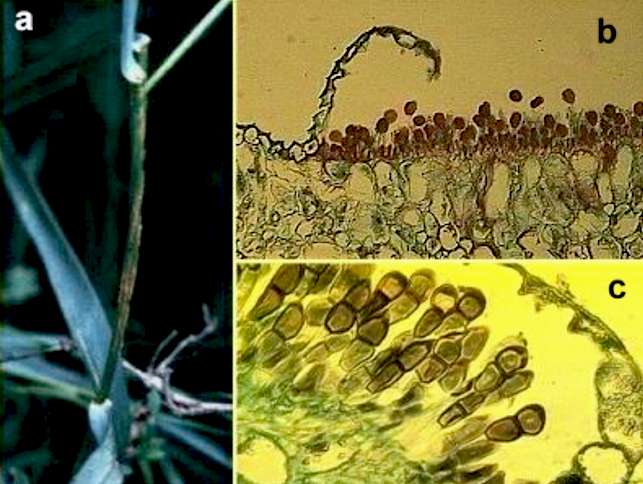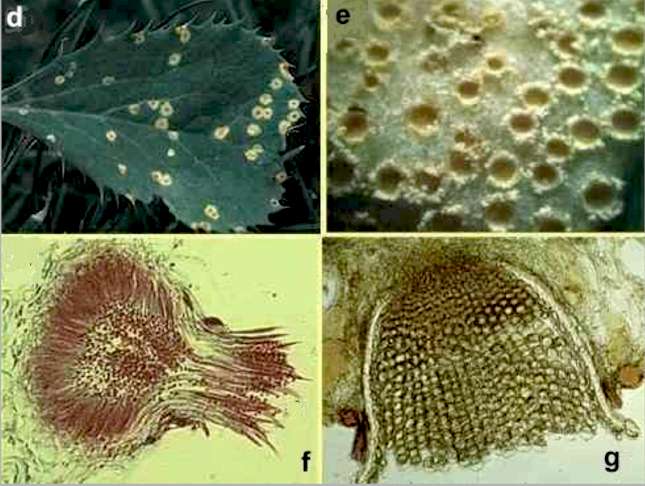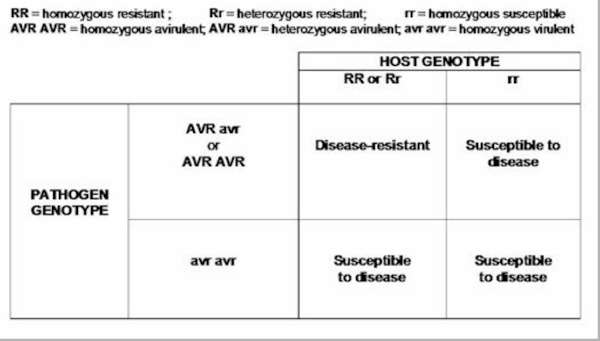..
MORE IMAGES FROM CHAPTER 14: FUNGI AS PLANT PATHOGENS
Fig. 14.23 continued. Black stem rust of wheat. (d) Lesions containing spermogonia on the upper surface of a barberry leaf. (e) Aecia erupting through the lower epidermis of a barberry leaf. (f) A spermogonium, showing the tiny spermatia and receptive hyphae. (g) Cross-section of an aecium.[© Jim Deacon]
Fig.
14.24. Powdery mildew of cereals, caused by Blumeria
graminis (Ascomycota). (A) Wheat leaves with
typical mildew symptoms. (B) Spore chains which
develop from a bulbous basal cell and mature
progressively from the base to the top. (C)
Haustorium with multiple finger-like projections within a
host cell, typical of many powdery mildew fungi. Note the
host nucleus in the cell, indicating that the cell is
alive despite the presence of a haustorium. (D) Two
cleistothecia (closed, sexual fruiting bodies containing
asci) ornamented with dark projections. The cleistothecia
commonly develop on mildewed leaves towards the end of
the growing season. They break down to release the
ascospores, which serve for dormant survival.
Pathogen recognition: the gene-for-gene hypothesis. In many cropping systems, large areas of land are sown with a single crop variety (cultivar) that has been bred for resistance to all known races of the pathogen. Selection pressure then operates on the pathogen to overcome this resistance by mutation. Since many billions of spores are released by the major pathogens each year – even in a single field - there is a strong likelihood of the resistance breaking down. This is especially true for crops that have been bred for single major gene resistance (R gene resistance) as opposed to ‘field resistance’ that is based on the combined activities of several ‘minor’ genes. The eminent plant pathologist, H. H. Flor, working with flax rust (Melampsora lini) in the 1940s and 1950s, proposed a simple scheme to explain the relationship between major gene resistance and the occurrence of disease – the gene-for-gene hypothesis. Based on extensive research of the genetics of both the host plant and the pathogen, he showed that, for every gene that confers resistance (R, a genetically dominant trait) in flax plants, there is a complementary gene that confers avirulence (AVR, again a genetically dominant trait) in the pathogen. So, the outcome of a host-pathogen interaction can be summarised in the table above, where: RR = homozygous resistant ; Rr = heterozygous resistant; rr = homozygous susceptible AVR AVR = homozygous avirulent; AVR avr = heterozygous avirulent; avr avr = homozygous virulent |
|||||||||||



